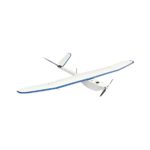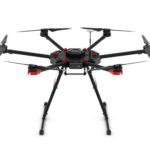08Sep
Fixed Wing or Multi-Rotor?

Should I buy a fixed-wing or a multi-rotor for my application?
At Unmanned Systems Source, we receive calls on a daily basis from customers who ask this very question. We always follow up with a question of our own, “I’m not sure, it depends. What’s your application?”. And so begins a conversation. Choosing between a multi-rotor or a fixed-wing is not always a straight forward choice. In fact, there are a number of factors that should be considered before making a selection. Common questions we ask interested buyers, include: What are the project objectives? How much area needs to be covered? What sort of flight duration is required? Are you collecting data? What is your payload? What is your experience level? And, finally, what is your budget? Once we understand the client’s needs and the operational environment, the choice comes into focus.
Fixed Wing Considerations 
Fixed-wings are generally better suited for rural environments and are work horses for many commercial and scientific applications. Though they may not offer the maneuverability of a multi-rotor, when it comes to flight times and coverage, fixed wings excel.
Other advantages include:
- Capability of operating at higher altitudes
- Faster flight speeds
- Power and capacity to carry heavier and, in some cases, multiple payloads – which in turn means the ability to gather more sophisticated data
- Option to choose from a wider variety of sensors
- Extended flight times, 60 minutes +
- Larger coverage
 Multi-rotor Considerations
Multi-rotor Considerations
The use of multi-rotors has exploded in recent years in large part due to their affordability and ease of use. But multi-rotor advantages certainly extend beyond these two points.
Other advantages include:
- Highly maneuverable in flight which is great for urban and tightly confined areas
- Ability to hover – which make it an excellent choice for inspections of infrastructure that require close-up examination
- Easy to operate and deploys quickly
- Small takeoff and landing footprint
- Affordable price-point

